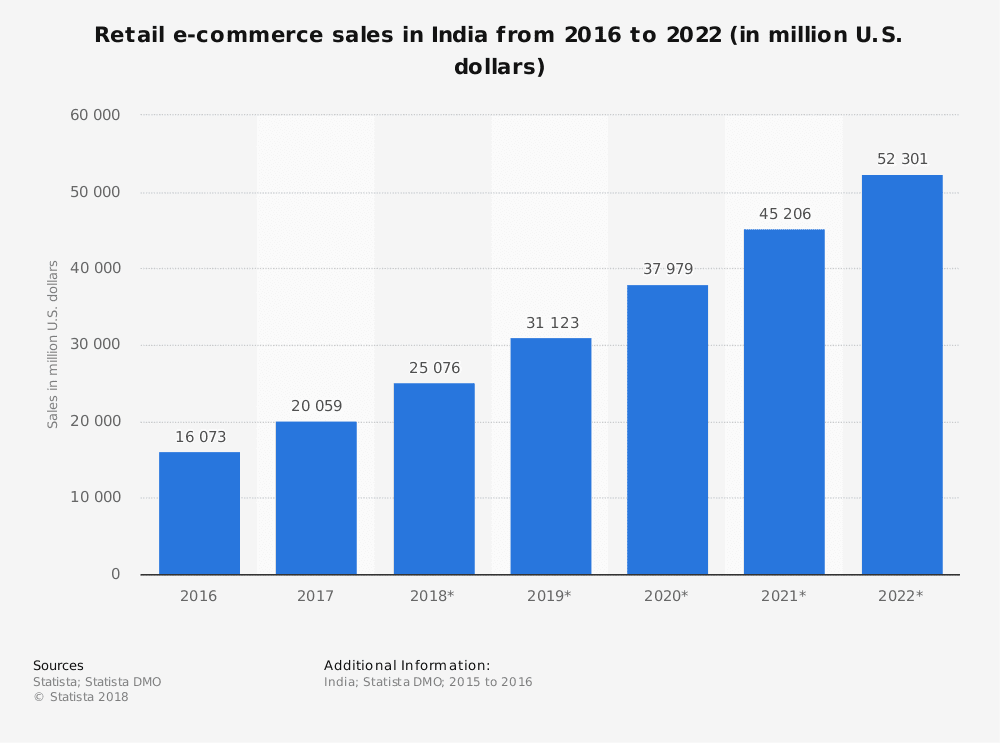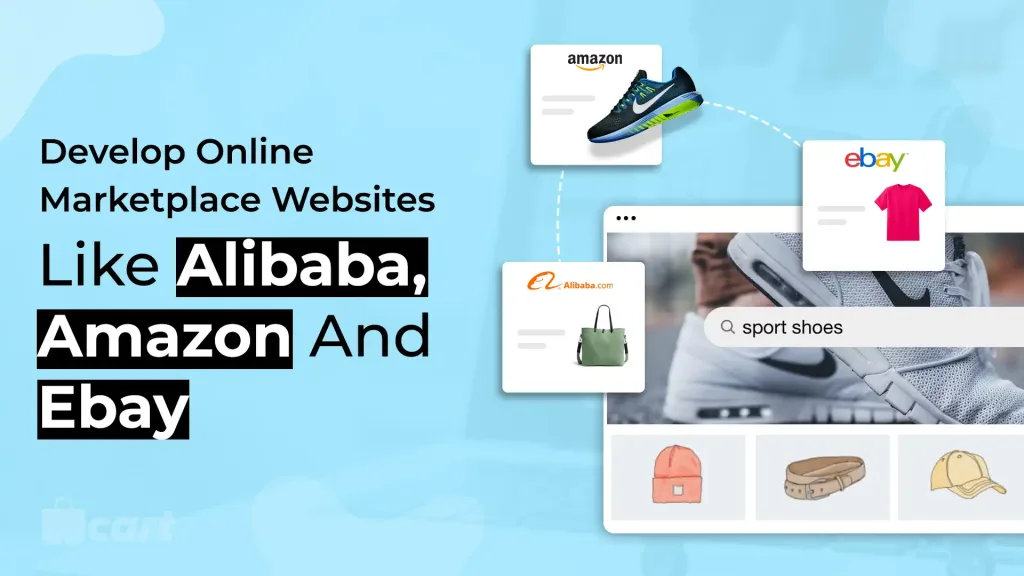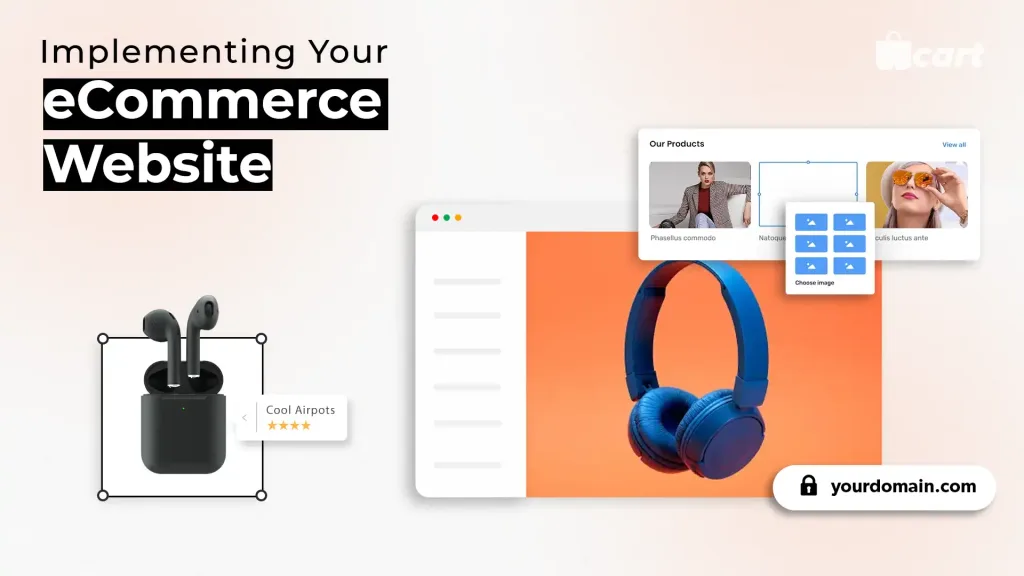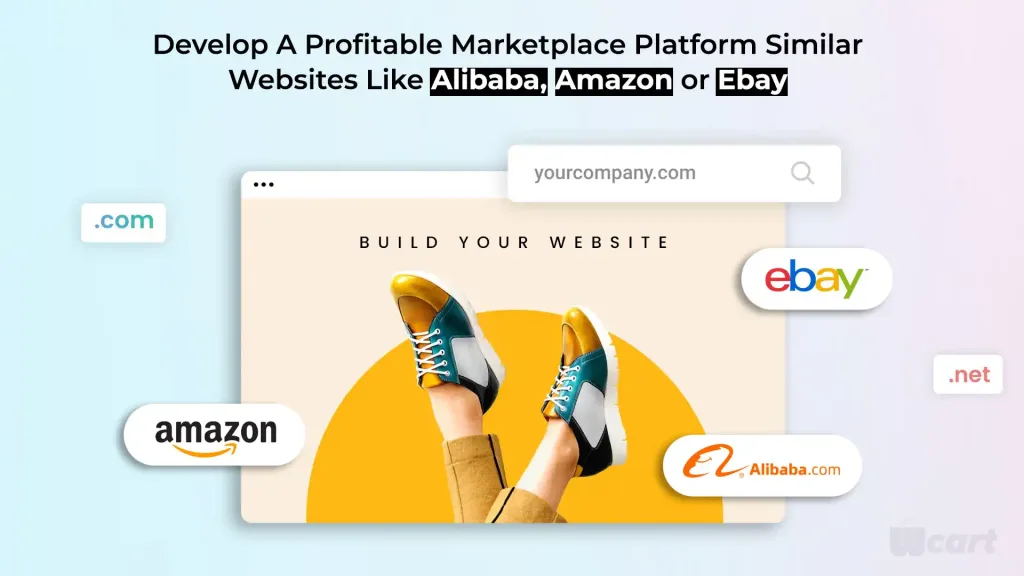Are you ready to dive into the world of ecommerce marketplace development? In our latest article, we’ll show you how to create websites like Alibaba, Amazon, and eBay in 2024. Discover the essential steps, tools, and strategies needed to build a successful online B2B ecommerce marketplace that rivals the giants of the industry, and learn how to build website like Alibaba for your business. Whether you’re a seasoned entrepreneur or a budding ecommerce business enthusiast, this guide has everything you need to bring your B2B marketplace vision to life. Let’s get started on your journey to building the next big thing in online retail!
To build websites like Alibaba is very well achievable when you have the best ecommerce website developers on your side. If you are thinking of starting an online store and looking for ideas for the best ecommerce platform to use, including dropshipping, this article will shed some light on this.
Build Your Multi-Vendor Marketplace Sites Similar To Alibaba Now!
Ecommerce websites like Alibaba have been hugely successful, owing to the one idea they brought into the market – take your products to the customer, rather than the other way around. Online marketplace websites like Alibaba, Amazon, and eBay were the first to implement the idea of e-commerce sites and their success drew a herd of start-ups to follow suit.
Because you can buy or sell any kind of product or service through your e-commerce site, and you can depend on factors like digital marketing and effective management of shipping costs to popularize your ecommerce website, investing your hard-earned cash to start an e-commerce site is a great idea to generate a steady flow of revenue.
Tracking KPIs for building E-commerce marketplace sites
Key Performance Indicators (KPIs) are metrics for measuring the performance and success of an E-commerce platform like Alibaba. Top-performing virtual marketplaces utilize advanced tools to render insights into their platform’s various aspects, from user engagement to financial performance. Monitoring these indicators ensures informed decision-making that is data-driven and enables continuous optimization of the marketplace.
KPI indicators:
- Customer Acquisition Cost (CAC): It is the cost incurred in acquiring a new buyer, which includes marketing and advertising expenditures.
- Visitor-to-Signup Conversion Rate: The percentage of website visitors signing up to those who only visit the site.
- Active Users: The number of users utilizing the virtual marketplace, calculated based on time intervals such as daily, weekly, and monthly.
- Session Duration: Time spent on the site per visit.
- Gross Merchandise Value (GMV): Total value of sales calculated based on required timeframes.
- Number of Transactions: Total number of transactions, calculated as per the required time intervals.
- Revenue Per User (RPU): Revenue generated per active user. It is an important metric to understand ROI.
- Take Rate: The percentage of revenue taken from each transaction.
- Seller Acquisition Cost: The cost incurred in onboarding a new seller.
- Seller Activity Rate: Frequency and volume of transactions to indicate seller’s engagement and performance.
- Net Promoter Score (NPS): It measures the likelihood of customers recommending the marketplace to the general population.
- Customer Satisfaction Score (CSAT): It measures users’ satisfaction level with the platform and the services.
- System Uptime: It measures the availability and performance of the e-commerce platform. High uptime is necessary for delivering a seamless shopping experience.
- Support Response Time: It is the time taken to resolve customer and seller queries.
- Average Order Value (AOV): The amount customers spend per order.
- Cart Abandonment Rate: It measures the percentage of users leaving items in the cart without completing the purchase.
- Churn Rate: The rate at which customers/sellers abandon using a platform.
Key Statistics On Ecommerce Websites Growing In Popularity

Back in 2012, a European Union survey data revealed that, out of the 820 million people who live in Europe, 250 million are e-shoppers and that ecommerce websites like Alibaba, and Amazon contribute 3.5% of the total internet economy to the GDP of the EU.
5 years later, the figures peaked due to the growing influence of mobile and social media marketing. With a steadily increasing number of buyers, the Asia-Pacific region tops at 654 million e-commerce buyers in 2017 and looks like the best market to start your e-commerce site.
So, it would be a much better plan to focus on these products when you build Alibaba similar site. This will help you to reach a break-even point faster.
Building Your Own Online Marketplace Sites Like Alibaba

Below is a complete guide on how to build best sites like Alibaba, while preserving its customer-centric nature.
10 Steps to Create a Website Like Alibaba
Building a successful marketplace similar to Alibaba involves a clear strategy and a well-thought-out process.
1. Identify a Strong Marketplace Idea
If you’re aiming to build a marketplace website like Alibaba, It all starts with generating ideas that solve real-world problems, as these tend to sell best. Alibaba identified an opportunity by connecting Chinese manufacturers with international buyers, catering to small and medium-sized businesses.
To begin the journey to success, follow these steps:
– Analyze Market Gaps
To start an ecommerce platform like Alibaba, begin by analyzing existing marketplaces like Alibaba, Amazon, or eBay. Identifying their shortcomings—whether it’s counterfeit products, high fees, or poor customer service—will help you find opportunities. These marketplace website development gaps can be the foundation for a new business idea.
For example, Alibaba faced issues with fake sellers and low-quality products. By focusing on solving these problems, you can carve out a niche in the ecommerce marketplace website industry.
– Leverage Community Insights
Social forums bridge the voice raisers and the listeners, providing an effective platform to gain insights into potential improvements.
Community forums like Reddit, Quora, or industry-specific groups provide a wealth of information. You can use these platforms to understand what users dislike about Alibaba or what features they seek in an alternative ecommerce platform. Insights from these forums can help you refine your offering.
For instance, many users seek Alibaba alternatives due to issues like product quality or lack of sustainability. This feedback can guide you in creating a marketplace website that stands out with better customer support or verified suppliers.
– Develop a Niche USP
Unique Selling Proposition (USP) must be determined as part of the differentiation strategy. Focus on offering features that Alibaba may lack, such as improved seller verification to prevent counterfeit products, or an emphasis on sustainable, eco-friendly suppliers. Your USP for ecommerce marketplace will help differentiate your platform from existing giants like Alibaba.
By addressing these needs, you can attract customers looking for Alibaba alternatives and position your platform as a trusted marketplace.
2. Choose the Right Marketplace Business Model
Building a website like Alibaba requires selecting the right business model that suits your platform’s long-term vision like Webnexs, Wcart, Shopify, and more. The business model of a marketplace determines how revenue is generated and the platform’s sustainability. Alibaba initially charged membership fees and later diversified its approach with a hybrid revenue model.
– Commission-Based Model
Sellers are charged a commission on each sale similar to Alibaba. It is a low-risk entry point that aligns the platform’s revenue with its success by allowing sellers to pay only when they benefit from sales.
– Subscription Fees
The platform offers premium memberships for sellers, providing additional benefits such as enhanced visibility, advanced analytics, or priority customer support. Buyers can also pay for memberships that grant access to exclusive deals or faster shipping.
– Advertising Revenue
Once traction is gained, sellers can pay for featured listings, banner ads, or product boosts. This model can become a significant revenue driver.
– Lead Generation Fees
Charging for lead generation is particularly useful in B2B marketplaces, where securing large contracts holds significant value.
Evaluating the strengths and weaknesses of each model based on the target audience and niche is essential. One feasible strategy includes attracting users by offering a mix of revenue streams or starting with a low-cost model before expanding into more premium options.
3. Start with a Focused Scope
When creating a website like Alibaba, geographical diversification can be a major challenge in the initial phase. Alibaba began by targeting B2B trade in China before expanding globally. Similarly, narrowing the focus helps in specializing and gaining expertise.
– Target a Specific Region or Market
After a detailed gap analysis, focusing on one particular geographical area or product category will attract buyers. This approach enables the refinement of product offerings, marketing, and operational processes without being overwhelmed.
– Test and Iterate
Launching to a niche audience before scaling up to a larger and more competitive market gives the agility to respond to feedback and make adjustments quickly. It ensures building a strong foundation, and minimizing risk while creating a roadmap for future growth.
4. Pre-Validate Your Marketplace Idea
Before you fully invest in building a website like Alibaba, a feasibility and viability study must be done to avoid costly mistakes by ensuring that there is demand for the idea through the following methods:
– Engage with Potential Sellers and Buyers
Direct contact with the target audience through surveys, interviews, or focus groups is essential to gather feedback on the proposed platform. The questionnaire should include questions about their requirements, frustrations with current solutions, and their likelihood of using a marketplace like yours.
– Create a Landing Page
The landing page must be designed to clearly outline the marketplace’s value proposition. By allowing users to sign up for early access or updates, you can gauge the interest of the target audience. This approach serves as a preliminary validation of market demand.
– Leverage Social Media
Using social media platforms to share marketplace ideas and gather comments will elicit candid feedback on the concept’s feasibility.
Pre-validating the idea will refine the marketplace’s features and approach, ensuring it meets real needs before committing significant resources to development.
5. Build a Marketplace Platform with an MVP
Starting your marketplace platform with a Minimum Viable Product (MVP) is the best way to enter the market quickly. An MVP allows the launching of a functional platform with only the most essential features:
– Core Features
The focus must be on the key components necessary to facilitate transactions like user registration, product listings, search functionality, secure payments, and seller-buyer messaging.
– Use Lean Development Techniques
Headless ecommerce platforms such as Webnexs, Wcart, or Shopify offer pre-built frameworks that save development time. By integrating these tools, creating a fully functional MVP faster allows gathering feedback early.
– Iterate Quickly
Insights must be gathered to continuously refine the platform. Early adopters provide invaluable feedback on usability, navigation, and missing features.
6. Onboard Your First Sellers
To start a marketplace like Alibaba, attracting sellers is one of the biggest challenges for any marketplace. Without a solid base of suppliers, the marketplace won’t be able to attract buyers. Strategies can be implemented for the same:
– Direct Outreach
Utilize social and professional forums, both online and offline, by personalizing your outreach efforts and emphasizing how the marketplace can help expand your business.
– Offer Incentives
Sellers should be encouraged to join the platform by offering perks such as discounted fees for early adopters, premium exposure, or enhanced tools to manage listings. These incentives can help overcome reluctance to join a new marketplace.
– Easy Onboarding
Ensure that the seller onboarding process is seamless and intuitive. Provide clear guides, tutorials, and support to help sellers list their products quickly and start selling.
Once a solid base of sellers is established, the marketplace will become more attractive to buyers, making it easier to grow.
7. Launch Your Marketplace
Ecommerce marketplace website launch strategies are required for success
– Soft Launch
A beta testing needs to be done before launching the marketplace to the public. This allows for gathering feedback and making improvements.
– Targeted Marketing
Digital marketing strategies such as SEO, social media advertising, and content marketing should be employed to reach the target audience. Early adopters can be incentivized with discounts or exclusive deals to drive initial traffic.
– Measure and Adjust
Track user behavior, transaction rates, and feedback post-launch. This data will help in identifying potential bottlenecks or areas for improvement. Continuously refining the platform based on user feedback is crucial.
Launching in stages helps prevent operational overload and ensures delivering a refined user experience from day one.
8. Reach Problem-Solution Fit
At this stage, ensuring that the marketplace is solving a real problem for users indicates a positive sign of growth. Indicators that you’ve reached problem-solution fit include:
– Consistent Transactions
Buyers and sellers are regularly completing transactions, and the marketplace’s core functionality is running smoothly.
– Satisfaction Levels
Positive feedback from both buyers and sellers shows that the marketplace meets their expectations. Collect reviews and conduct user surveys to measure satisfaction.
– Continuous Iteration
Analyze user behavior to identify areas for improvement. Tackle issues like slow loading times, checkout errors, or poorly optimized search functionality as they arise.
Achieving problem-solution fit ensures that the marketplace is addressing the core needs of users, laying the foundation for long-term success.
9. Reach Product-Market Fit
Product-market fit is when the marketplace platform consistently attracts a loyal user base and generates consistent revenue. Key indicators include:
– Increased Transactions
The platform consistently facilitates transactions between buyers and sellers, driving revenue growth through commissions, ads, or subscription fees.
– Customer Loyalty
Buyers and sellers frequently return to the platform, and the marketplace begins to develop a reputation as a trusted place to do business.
– Scalability
The platform’s technology and infrastructure can handle increased traffic and demand without significant issues.
Once product-market fit is reached, focusing on scaling the marketplace through strategic marketing, partnerships, and external funding will be ideal.
10. Scale into New Markets
With a strong foundation in place, scaling the marketplace is necessary:
– Expand Geographically
Expand to new regions, focusing on areas where the initial concept has proven successful. Localizing the platform by offering language support, regional payment methods, and currency conversions is key.
– Add New Categories
Introduce additional product categories or services, leveraging existing user base to support the new offerings.
– Build Strategic Partnerships
Form alliances with logistics companies, payment gateways, and other service providers to ensure smooth operations as scaling is done.
Implementing Your Ecommerce Website Similar To Alibaba

It’s crucial to follow a process while implementing your ecommerce website, as it gives you room to regress and improve.
Choosing the right platform for your e-commerce business website is one of the first things you would have to do, especially when you are aiming to develop sites like Alibaba, which plays a significant role in global trade. You can choose any of the ecommerce platforms like Headless Ecommerce, Node.js Platform etc… that help to build your Ecommerce website. When you are planning to build stores like Alibaba and develop advanced B2B ecommerce and wholesale shopping websites like Amazon.
Have a team of ecommerce website designers, developers, and testers ready at your disposal to develop the website and materialize your ideas into effective web-based applications.
Host and test your ecommerce website once it’s ready. Testing helps you sort out any bugs and improve the performance of your website.
Once your ecommerce website is ready to roll, launch your website to a target audience. Make use of direct and/or influential marketing at this stage.
5 Key Considerations To Develop A Profitable Marketplace Platform – Create Alibaba Similar Sites

To run a smooth and profitable ecommerce business website, an effective infrastructure must be in place from the inception of the site. Also, important features of store design attract more customers while keeping the existing customers happy with your service.
User Interface
Having an interactive and user-friendly website is important so that your customers can easily find the product they’re looking for. While it will help in bringing traffic to your ecommerce website, the user interface also plays a major part if you plan to expand to mobile platforms shortly.
Support
A quick and dedicated CRM team will prove to be of advantage while addressing the queries and concerns of customers, especially when dealing with wholesale orders. Whether it’s a matter of late delivery or a faulty product, a prompt and assured response should be made to the customer.
Security
A customer would need to share their personal information like bank account details for payment procedures, and not only do you have to establish a secure website, but you also need to ensure the clients feel secure as it helps in building trust and confidence. Secure payment methods are a key factor when building shopping sites like Alibaba.
Logistics
Logistics is an important pillar of operations in an e-commerce website. Choose operators with a good track record and extraordinary last-mile delivery.
Product Data
The products on your website must have enough product data. This includes adequate product descriptions and specifications in the need of text, images, and if the products demand, then a demo video. If sellers fail to provide enough data for their product, it’s still your responsibility to furnish enough information about the product on your website.
Visit Here: How to Build an Ecommerce Marketplace Website like Amazon
Conclusion To Build Other Websites Like Alibaba
These are some of the aspects that you need to follow and know how to create sites like Alibaba to handle retail and wholesale needs. For more information about Ecommerce website development, Contact Webnexs.

How To Create Website Similar To Alibaba FAQs
1) Why build a website for your business?
A website expands your reach, enhances brand visibility, facilitates customer engagement, enables online transactions, and fosters credibility in the digital world.
2) How much does it cost to build a good website like Alibaba?
Costs vary widely based on features, design complexity, and development rates. Expect a substantial investment, ranging from thousands to millions of dollars.
3) How to create a website like alibaba, an eCommerce marketplace?
To develop a platform like Alibaba, begin by defining your niche, creating a detailed business plan, selecting suitable technologies, hiring experienced developers, and focusing on user experience and security.
4) How can I ensure a smooth user experience on my marketplace sites similar to Alibaba?
Optimize site navigation, provide quick search filters, ensure mobile responsiveness, offer clear product details, and streamline the checkout process for a seamless shopping journey.
5) What security measures should I implement for sites like Alibaba?
Incorporate SSL encryption, trusted payment gateways, strong user authentication, regular security audits, and data encryption to safeguard user information and transactions effectively.


Leave a Reply to Syed Khan Cancel reply